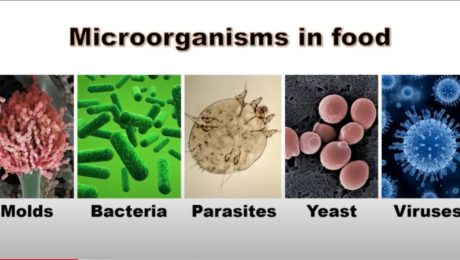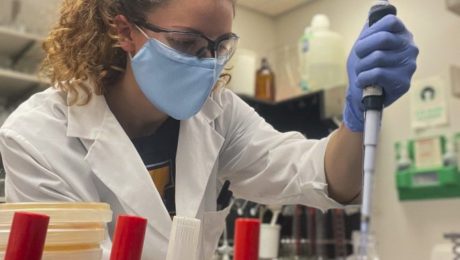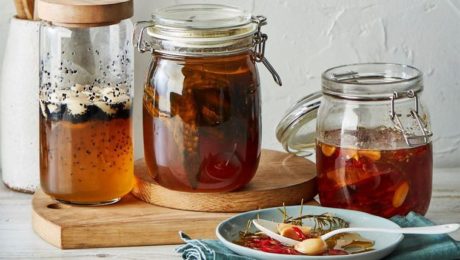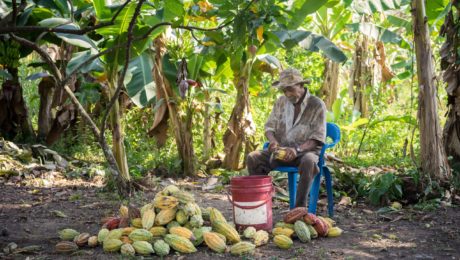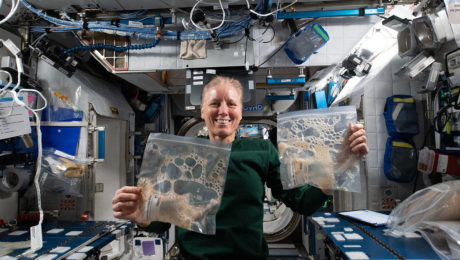Defining Postbiotics
As postbiotics continue to trend among consumers, the International Scientific Association for Probiotics and Prebiotics (ISAPP) released a consensus definition on the category, published in Nature Reviews: Gastroenterology & Hepatology.
The panel of international experts that created the definition made it clear that postbiotics and probiotics are fundamentally different. Probiotics are live microorganisms; postbiotics are non-living microorganisms. The published definition states that postbiotics are a: “preparation of inanimate microorganisms and/or their components that confers a health benefit on the host.”
Inactive Microorganisms
A postbiotic could be whole microbial cells or components of cells, “as long as they have somehow been deliberately inactivated,” according to the news release by ISAPP. And a postbiotic does not need to be derived from a probiotic.
“With this definition of postbiotics, we wanted to acknowledge that different live microorganisms respond to different methods of inactivation,” says Seppo Salminen, professor at the University of Turku and the lead author of the definition. “Furthermore, we used the word ‘inanimate’ in favor of words such as ‘killed’ or ‘inert’ because the latter could suggest the products had no biological activity.”
The definition has been in the works for almost two years by authors from various disciplines in the probiotics and postbiotics fields. These include: gastroenterology, pediatrics, metabolomics, functional genomics, cellular physiology and immunology.
“This was a challenging definition to settle,” says Mary Ellen Sanders, ISAPP’s Executive Science Officer. “There are some who think that any purified component from microbial growth should be considered to be a postbiotic, but the panel clearly felt that purified, microbe-derived substances, for example, butyrate or any antibiotic, should just be called by their chemical names. We are confident we captured the essential elements of the postbiotic concept, allowing for many innovative products in this category in the years ahead.”
Growing Scientific Interest
Sanders continues: “The definition will be a touchstone for scientists, both in academia and industry, as they work to develop products that benefit host health in new ways. We hope this clarified definition will be embraced by all stakeholders, so that when the term ‘postbiotics’ is used on a product, consumers will know what to expect.”
Postbiotics have been on the market in Japan for years, and fermented infant formulas with added postbiotics are sold commercially in South America, the Middle East and in some European countries. ISAPP, in a release, notes: “Given the scientific groundswell, postbiotic applications are likely to expand quickly.”
The definition is the latest in a series of international consensus definitions by ISAPP. These include: probiotics, prebiotics, synbiotics and fermented foods.
- Probiotics: Live microorganisms that, when administered in adequate amounts, confer a health benefit on the host.
- Prebiotics: A substrate that is selectively utilized by host microorganisms conferring a health benefit.
- Synbiotics: A mixture comprising live microorganisms and substrate(s) selectively utilized by host microorganisms that confers a health benefit on the host.
- Fermented foods: Foods made through desired microbial growth and enzymatic conversions of food components.
- Published in Science
Syn-SCOBY
Engineers at MIT and the U.S. Army Research Lab have developed what they call Syn-SCOBY, a living material made from laboratory yeast and bacteria. Similar to a kombucha mother, it is a tough cellulose material that researchers say can be used to purify water and detect pollutants. They envision Syn-SCOBY being used in the biomedical field and for food applications.
“We foresee a future where diverse materials could be grown at home or in local production facilities, using biology rather than resource-intensive centralized manufacturing,” said associate professor Timothy Lu, of MIT’s departments of biological engineering and electrical engineering and computer science.
Read more (MIT)
- Published in Science
The Safety of Fermented Food
Thanks to lactic acid — which kills harmful bacteria during fermentation — fermented foods are arguably among the safest foods that humans eat. But if critical errors are made, there is the risk of food safety hazards.
“When we talk about fruit and vegetable ferments, there is a very long history of microbial safety with traditionally fermented fruits and vegetables,” says Erin DiCaprio, extension specialist at University of California, Davis, Department of Food Science and Technology. “While outbreaks associated with fermented fruits and vegetables are rare, vegetable and fruit fermentation is not without risk.”
DiCaprio, a food safety expert, detailed proper food safety protocols during a webinar for EATLAC, a UC Davis project putting scientific knowledge and research behind fermentation. DiCaprio shared two documented instances of fermented foods causing a foodborne illness, both from small-scale batches of kimchi. But she emphasized that, when all food safety concerns are mitigated, fermented foods do not pose a risk.
“From the food microbiology standpoint, bacteria really are the most important group of microorganisms because bacteria, certain types of bacteria, are a food safety concern,” she adds. “There are many different types of bacteria that contribute to food spoilage and, of course, there are specific types of bacteria that are used beneficially for fermentation.”
What happens during fermentation that makes food safe? Lactic acid bacteria are created, which convert sugars into lactic acid, acetic acid and CO2. Those antimicrobial compounds help fight off pathogens, competing with other microbes for nutrition sources.
Biological hazards — bacteria, viruses and parasites that can cause foodborne illnesses — are the biggest concerns. Botulism, E. coli and salmonella are the main hazards for fermented foods. Botulism can form in oxygen-free conditions if a fermentation is not successful and acid levels are too low. E. coli and salmonella form when sanitation practices are not followed.
“Commercially, when someone is developing a valid fermentation process, they are typically going to be looking to see that sufficient acid is produced during fermentation, to inactivate some of these acid tolerant (bacteria),” DiCaprio says. “Our traditional vegetable fermentations — things like fermented cucumber, sauerkraut, kimchi — they’ve all been shown to produce sufficient acid to inactivate the sugar toxin producing e-coli, so from a safety standpoint, sufficient acid production is the critical control point for ensuring the safety of a fermented fruit or vegetable. “
There are seven critical factors to keep a ferment safe:
- High-quality, raw ingredients. “If there are a high number of spoilage microorganisms to start with, it will be really difficult for the lactic acid bacteria to dominate the fermentation,” DiCaprio says.
- Research-based recipe. Following a tested recipe ensures the proper balance of ingredients to keep the food safe.
- Proper sanitation. Cleaning of all utensils and surfaces ensures no pathogens will contaminate the food. This mitigates cross-contamination risk, too.
- Preparation of ingredients. Food particles should be uniform in size, either cut in small slices or shredded. Smaller pieces release more water and nutrients, promoting the growth of lactic acid bacteria.
- Salt concentration. Lactic acid bacteria thrive in a salt brine. The key amount: anywhere from 1-15% salt brine by weight of the ferment.
- Appropriate temperature. A temperature between 65-75 degrees fahrenheit is ideal to keep spoilage microorganisms at bay.
- Adequate time. “It takes a while for significant acid to be produced, so be patient and follow the directions in the recipe,” DiCaprio advises. Most fruit and vegetable ferments take 3-6 weeks to be completed.
Reducing Wine’s Alcohol Content
Can you make wine with lower alcohol content? Researchers at Washington State University think so. They are growing wild in a lab to study how the yeasts behave and affect flavor and alcohol levels.
Yeasts used in winemaking — typically Saccharomyces — ferment by consuming the sugars in grapes, producing alcohol. If the grapes have higher sugar levels, they may produce wine with a higher alcohol percentage. But higher alcohol can have a range of negative consequences — bitter taste, incomplete fermentation leaving residual sugar and even higher taxes for the winemaker. WSU researchers hope, by perfecting wild non-Saccharomyces yeast strains, they can help the state’s winemakers better control the fermentation process, and reap the benefits of lower alcohol percentages.
Read more (Daily Evergreen)
- Published in Food & Flavor, Science
Egypt’s 5,000-year-old Brewery
Archaeologists from NYU and Princeton have uncovered the world’s oldest industrial-sized brewery. Located in southern Egypt near the Abydos ruins, the facility dates from 3000 B.C. Many of Egypt’s early kings were born in Abydos, so it’s assumed the brewery made ceremonial beer for ritual offerings and royal funerals.
“The fundamental significance of the Abydos brewery is its scale relative to anything else in early Egypt,” project co-leader Dr. Matthew Adams said. The brewery likely produced about 22,400 liters with each batch (possibly weekly.) “That is a huge amount of beer by any standard, even in modern terms. It’s absolutely unique.”
Read more (Wine Spectator)
- Published in Science
An Irresistible Appeal
Scientists at Caltech , using fermented juice as bait have discovered that a fruit fly can travel six million times its body length in search of food.
Flies were lured by “a tantalizing cocktail of fermenting apple juice and champagne yeast produces carbon dioxide and ethanol, which are irresistible to a fruit fly.” Scientists released buckets of fruit flies on a dry lakebed in California’s Mojave Desert, far away from any other tempting food source.
The team is studying how far the flies would travel to a food source. Certain species of fruit flies are invasive and can cause significant agricultural damage. Their results will be published in the April issue of Proceedings of the National Academy of Sciences.
Read more (Caltech)
- Published in Science
Fermented Honey Top Ingredient in 2021
Fermented honey topped the list of emerging ingredients in 2021, as presented by food industry intelligence firm Datassential at the Research Chefs Association’s RCA+ conference. Fermented honey is in the “sweet spot” (pun intended) of intersecting larger trends — consumers gravitating to honey as a sweetener and to fermented products for their health benefits.
Read more (Food Business News)
- Published in Food & Flavor
Solving Illnesses with Fermentation?
Scientists in Russia and Egypt have developed a functional drink that’s been proven to combat anemia and malnutrition. The juice is made from beet extract, milk and probiotic bacterial strains. The scientists developed a quinoa bread, too. The goal is to keep the beverage and bread affordably priced and get them offered at grocery stores internationally.
“One should bear in mind that we are not creating a medicine, but a natural, functional food product,” said Sobhi Ahmed Azab Al-Suhaimi, professor in the Department of Technology at South Ural State University (SUSU) in Russia. “However, this juice can make up for the lack of iron, zinc, manganese and calcium in the body. One serving of the drink will contain the whole rate [sic] of minerals. Its carbohydrate content is low. Fermented juice will help to overcome anemia and to improve digestion due to probiotics.”
Scientists at SUSU worked with scientists at the University of Alexandria in Egypt. Their findings were published in the Journal of Food Processing and Preservation and Plants.
Read more (Phys.org)
Microbes & Chocolate’s Flavor
Love the rich flavor of chocolate? Thank microbes. Scientists are researching how fermentation affects the flavor of chocolate. An article in Scientific American details how a giant cacao seed pod naturally ferments.
Cacao has a wild fermentation, meaning the farmers who harvest the pods “rely on natural microbes in the environment to create unique, local flavors.” Just as grapes take on regional terroir (the characteristic flavor imparted by a place), “these wild microbes, combined with each farmer’s particular process, confer terroir on beans fermented in each location.” Demand for high-quality cacao beans is growing, and producers who make small-batch chocolate with distinctive flavors also are seeing sales growth.
Read more (Scientific American)
- Published in Food & Flavor, Science
Fermenting — in Space?
Microbes that coexist on plants influence a crop’s size, shape, color, flavor and yield. What would these microbes do in microgravity? The International Space Station (ISS) is testing to find these results.
Flight engineer Shannon Walker (pictured) shows sample bags collected for the Grape Juice Fermentation in Microgravity Aboard ISS study. Astronauts will observe the fermentation process, measuring microbial differences. Back on earth, a matching, control sample is being observed in an environmental control chamber that mimics the ISS ambient temperature. The space and earth samples then will be analyzed for changes. Both flight and ground control samples are analyzed post-investigation for genetic change.
Read more (NASA)



